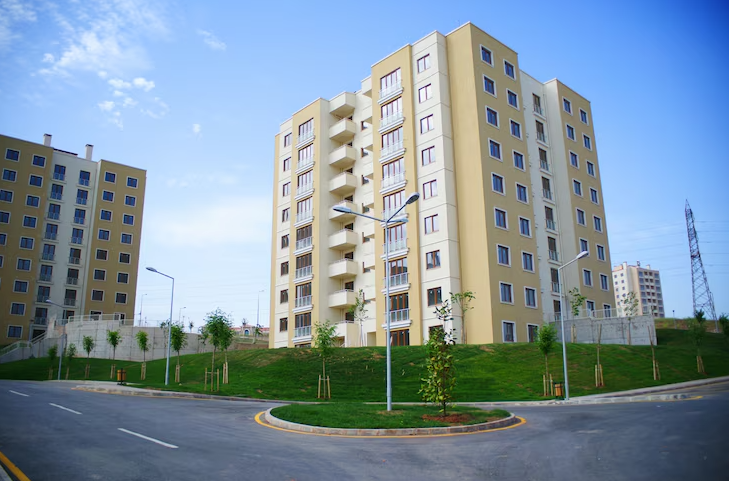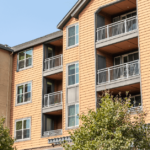Introduction
In an effort to modernize affordable housing and improve access to resources for low-income Americans, the U.S. Department of Housing and Urban Development (HUD) introduced the Housing Opportunity Through Modernization Act (HOTMA). This legislation brings significant changes to how properties funded through the Low-Income Housing Tax Credit (LIHTC) program are managed, particularly when it comes to tenant eligibility, income calculations, and compliance.
This post explores what HOTMA is, why it matters, and how LIHTC property managers, affordable housing developers, and tenants can prepare for these changes to ensure continued compliance and successful operations.
What is HOTMA?
HOTMA, signed into law in 2016, is a comprehensive reform bill aimed at addressing modern housing challenges. While its initial focus included Section 8 housing and voucher programs, HOTMA’s scope expanded to cover other housing programs, including LIHTC properties. The new rules, rolling out in stages, aim to simplify compliance and reduce inefficiencies within affordable housing.
The most notable HOTMA provisions for LIHTC address income eligibility and occupancy standards. These changes impact how properties calculate and verify tenant income, recertify tenants, and maintain compliance with HUD audits. HOTMA offers potential for streamlined operations, but it also demands updated policies and diligent planning from property managers.
Why HOTMA Matters for LIHTC Properties
The changes HOTMA brings are especially significant for LIHTC properties. Given that LIHTC properties must meet strict income-based eligibility criteria, the new HOTMA guidelines affect not only who can qualify for housing but also how income is verified and recertified. Here’s why HOTMA matters for LIHTC properties:
- Streamlined Income Calculations
HOTMA standardizes income calculation methods, reducing the administrative burden for property managers. For LIHTC properties, this means a more consistent approach to determining tenant eligibility, ultimately leading to a more efficient certification process. - Flexible Occupancy Requirements
To better serve mixed-income properties, HOTMA introduces flexible guidelines around tenant income limits. These changes allow for a better mix of income levels within a property, which can contribute to a healthier, more sustainable community and reduce high tenant turnover. - Improved Compliance Standards
HOTMA introduces new compliance standards designed to simplify the audit process for HUD-regulated properties. While these updates may require an initial adjustment period for property managers, the end result is a streamlined audit process that can reduce the risk of compliance violations.
Key HOTMA Provisions for LIHTC Property Management
To understand how HOTMA’s provisions apply to LIHTC, it’s helpful to break down some of the primary changes in tenant eligibility, income calculations, and recertification processes.
1. Tenant Eligibility Changes
HOTMA impacts the way LIHTC properties determine tenant eligibility, particularly regarding annual recertifications. Under the new rules, LIHTC property managers will need to review and recalculate tenant income on a regular basis, adjusting for inflation and cost-of-living changes. This update ensures that eligible tenants remain in compliance while allowing for slight income fluctuations without disqualifying low-income residents.
2. Income Calculation Revisions
One of HOTMA’s biggest changes involves income calculation. The new rules streamline income verification processes and redefine certain income types, making it easier for LIHTC managers to confirm tenant qualifications. By adopting standardized income verification methods, HOTMA aims to reduce discrepancies and create a more uniform approach across properties, ultimately saving time and administrative resources.
3. Revised Recertification Timelines
Previously, LIHTC properties were required to conduct annual tenant recertifications. HOTMA introduces more flexible recertification timelines, allowing property managers to align tenant reviews with HUD requirements. This adjustment simplifies the compliance process and ensures that properties meet HUD standards without excessive administrative burden.
Implementation Timeline for HOTMA’s LIHTC Provisions
HUD’s rollout of HOTMA provisions for LIHTC properties is phased to allow adequate time for training and policy adjustments. While some requirements may be enforced immediately, others have implementation deadlines in the coming months. LIHTC property managers should stay informed of these deadlines and proactively update their policies to meet compliance requirements.
Key Milestones:
- Income Verification Changes: Scheduled for early 2024, these provisions standardize verification protocols.
- Recertification Flexibility: Expected mid-2024, enabling properties to adapt recertification schedules to meet HUD’s new standards.
- HUD Audit Adjustments: Later in 2024, HUD will provide updated audit guidelines for compliance under HOTMA.
Preparing for HOTMA: What LIHTC Property Managers Should Know
HOTMA introduces new complexities but also offers LIHTC property managers a chance to streamline operations and improve compliance processes. Here are actionable steps to prepare for HOTMA’s full implementation:
- Update Tenant Screening Processes
Ensure tenant screening policies reflect HOTMA’s new income calculation and eligibility standards. Staff training will be essential to apply these changes correctly and ensure all tenants meet the updated requirements. - Develop a Recertification Schedule
Consider revising your property’s recertification timeline based on HOTMA’s new flexible guidelines. This change can help reduce administrative workload and maintain better tenant relations. - Prepare for New Audit Standards
Audit preparation will be critical under HOTMA’s new compliance rules. Establish a document management system that aligns with HUD’s upcoming audit guidelines, keeping accurate records of tenant income and recertification data. - Educate Tenants
Tenants may have questions about how HOTMA affects their eligibility. Providing informational resources and answering tenant questions can help foster trust and ensure tenants understand their rights and obligations.
Looking Ahead: The Long-Term Impact of HOTMA on Affordable Housing
HOTMA represents a significant step toward modernizing affordable housing and making compliance more manageable. For LIHTC properties, these changes mean more efficient operations, fewer compliance errors, and a simplified tenant experience. By staying ahead of the curve and understanding the implications of these new guidelines, LIHTC property managers can continue to provide valuable, affordable housing to those in need.
Conclusion
The new HOTMA rules mark a critical turning point for LIHTC properties, requiring updated policies, flexible recertification processes, and a renewed commitment to compliance. As these changes unfold, property managers, developers, and tenants will benefit from staying informed and prepared for a smoother, more efficient approach to affordable housing.










